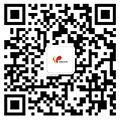Industry watch | garment industry with a new round of broken
2025-02-17
According to the data of the National Bureau of Statistics, in 2024, the operating income of 38,000 textile enterprises above designated size in the country increased by 4% year-on-year, and the growth rate increased by 4.8% over the previous year; The total profit increased by 7.5% year-on-year, and the growth rate was 0.3% higher than that of the previous year. The industry as a whole is stable.
In 2025, this stability will be challenged, and the supply chain of the garment industry belt will also face a new round of disruption.
In February, the United States issued an executive order to impose a 10 percent tariff on goods imported from China. Data show that at present, the United States on Chinese imports of clothing tariff level maintained at about 25%, of which chemical fiber clothing import tax rate is higher, such as chemical fiber sweater import tax rate of 32%, while cotton sweater tax rate of about 16.5%. After the new 10% tariff, the highest tariff on some clothing products from China reached about 42%.
In the following days, the United States has swung back and forth on the "$800 tax exemption policy." It was initially rumored that the policy would be scrapped, meaning that any product made in China (including Hong Kong) entering the US market would be subject to additional tariffs, regardless of the value of the product. The original "small amount of rapid customs clearance" model no longer exists, and the seller has to pay the corresponding tariff according to the HS code (commodity classification code) of the product. Later, the United States decided to restore the relevant preferential policies.
The unstable ecology of tariffs has brought an impact on China's cross-border e-commerce industry, especially the apparel industry. Many practitioners said that the most direct impact is the rise in costs, if the price is raised, the market competitiveness is affected. We need to find another way to break the game.
The transfer of part of the industrial chain to Southeast Asian countries such as Vietnam is one of the directions of breaking the situation. Public reports show that a number of listed companies such as Weissing Shares, Huafu Fashion and Blum Oriental have landed in Southeast Asian countries. Not long ago, it was also reported that a fast fashion cross-border e-commerce giant in Guangzhou is also planning to let some suppliers add new production lines in Vietnam, and give corresponding procurement incentives.
Some analysts said that the rise of the garment industry in the past few decades, especially the supply chain agglomeration effect in the Pearl River Delta, is built on the advantages of labor costs and the dividend of the era of reform and opening up. In recent years, as the demographic dividend fades and land costs rise, garment enterprises in the Pearl River Delta are faced with the survival dilemma of "profit per T-shirt may be less than 0.5 yuan", and enterprises must realize the climb of the value chain through innovation. Industrial relocation should not be simply understood as the loss of production capacity, but also the transformation and upgrading of enterprises to adapt to the tide of globalization and layout of dynamic elastic industrial chain. The "escape cage and change bird" brought by industrial migration is also reshaping the global competitive dimension of China's garment industry.
On the other hand, some scholars have raised concerns. Luo Zhiheng, chief economist of Yuekai Securities, pointed out that industrial relocation will exacerbate the risk of premature and rapid deceleration of China's manufacturing industry, and it is necessary to be vigilant about the risk of "hollowing out" of the industry, the main body of the manufacturing industry is hollowed out, and the industry has evolved into the service industry, financial industry and trade industry. Luo Zhiheng believes that the transfer of the industrial chain does not necessarily cause the "hollowing" of the industry, but if the key links of the industrial chain cannot be retained, or the industry outflow speed is too fast, it is easy to cause the "hollowing" of the industry, and it is difficult to reverse in the short term. Affected by industrial migration, the scale of jobs in labor-intensive enterprises has been reduced.
Faced with this situation of coexistence of opportunities and challenges, the clothing industry chain in 2025 has come to the crossroads of choice, and the game-breaking strategy of the industry's head platform giants is worth looking forward to.



